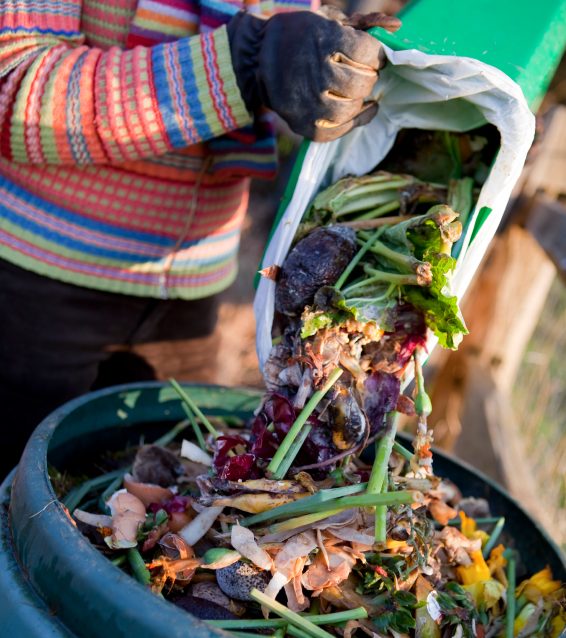It is recommended that residents consider the following before committing to having a composter at home:
The type of food waste you want to compost will impact your selection. Food waste that you do not want to home compost can be placed in your Green Bin or dropped-off for composting.
- It is also important to consider the location where you place your composter. Outdoor composters will need to receive enough sunlight to generate heat for the composting process and the moisture content needs to be monitored.
- Not all products create “compost” some create soil amendments or only dehydrate your food waste – so be sure the end product is something you will utilize.
- At this time plastic composters are not currently recyclable, so choosing a well-built composter that will last for a long time is a good consideration.
Composting Options
These options are meant to be a guide for residents in choosing the type of composter that works best for them. Detailed information about each composter type can be found here.
If you are unsure if your composter does not meet the requirements, email infrastructure@scrd.ca.
OUTDOOR
These composters are designed to be located outdoors because they require natural occurring bacteria and worms that are located outside and placement location may affect functionality.
Traditional/Static Composter
This composting unit can be purchased or built and does not move. The materials must be mixed and moisture content monitored. The location of the composter will affect the time it takes for materials to be turned into compost. Once composted, the compost needs to be removed from the unit.
Looking to build your own? The supplies to build your own composter can be covered by the home composter rebate, we just need the details on the application, including what you’re going to build and an estimate of approximate material costs to get pre-approved.
Lots of information and build and cut lists exist online to build composters out of lumber, pallets or chicken wire. Take your time finding options that will work for the volume you’ll generate. For example if you have a lot material you might want to consider a system that incorporates multiple bins.
In-Ground Composter/Digester
Designed to stay in one location for a period and utilizes the sun’s heat to breakdown food waste. The materials are not removed from the digester. The Ridge Meadows Recycling Society has great information on how this type works.
Vertical Stacked Composter
Designed to compost in stages, requires similar conditions to on the ground versions of traditional composters and may require inoculation of dirt/soil/worms to work.
Tumbling
Rotating or tumbling composters use heat from the sun and make the mixing the material easier.
INDOOR
These options are designed for indoor use or small spaces and if needed, can be scaled up. They do not create compost or nutrient rich top soils but instead create either a “soil tea” or fertilizer like substance that provides nutrients for your soil for both indoor and outdoor use.
If you are choosing an indoor option because you do not have an outdoor space please ensure you have reviewed your options for where the created materials will end up as these cannot go to garbage and may or may not be allowed in your food waste bin.
It is recommended that residents review available options before proceeding.
Worm Composting
A worm composter or a vermi-composter uses worms to breakdown food waste into “castings”. This type of composter can be a great indoor alternative and a fun family project. Fishing supply stores, garden centres and local farms can be contacted to find the “red wiggler” worm which is typically the preferred worm for this composter type. You can purchase pre-built or build your own using old plastic bins.
Food Fermentation
Fermentation units like Bokashi do not make your traditional compost but turn your food scraps into nutrient rich materials to boost your soil’s and plant health. Information about this process and how it works can be found here.
Electric Food “Recycler”
The material generated by electric food recyclers varies by the type of product. Confirm what you will do with the materials after they’ve been processed by the product.
